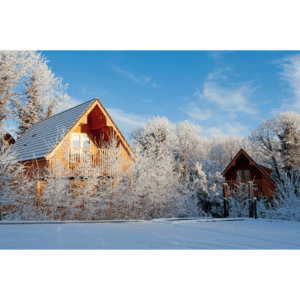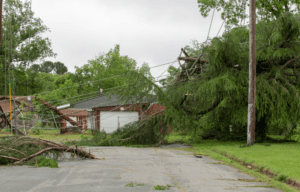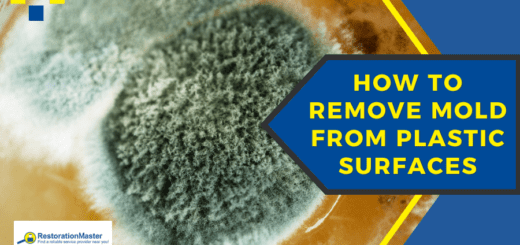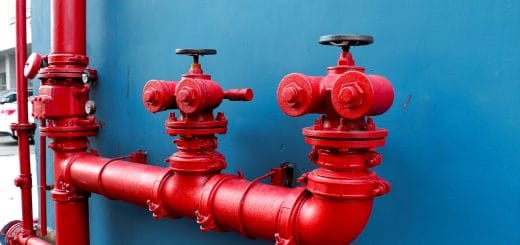How to Prepare Your Log Cabin for Storm Damage
If you own a cabin, there is always a chance that it could get damaged by a storm, a tornado, or even a flood or another type of natural disaster. It is important to be aware of what your homeowner’s policy covers and what to do in case a disaster strikes your property. It is also important to prepare your property for winter so you can avoid further damage caused by the elements.
How to Prepare for a Disaster at Your Log Cabin with Your Insurance Carrier
You should review your coverage with your agent yearly and make updates as needed. Your policy should have listed all of your current buildings and structures, their contents, and your needs. Take into account exclusions and limitations on any items that have worth. There are different types of policies available for your property and your insurance agent should go through those with you so you can make the best decision for your specific property. You should also check into endorsements and what is covered for those. For example, do you have an ordinance and law rider if you have an older vacation home? That coverage should pay for the rebuilding of a destroyed cabin and the upgrades so you can follow the current building codes.
Here are some questions you should ask your agent:
-
Is there a flood program for the cabin community?
If floodingFlooding is the overflow or accumulation of water in areas t... More is a threat, you should make sure to include it in your policy. Most homeowners’ policies do not have water and floodingFlooding is the overflow or accumulation of water in areas t... More included in the policy. You may be able to cover your property with flood insurance through The National Flood Insurance Program or a private insurer.
-
Does my landscaping have coverage?
Storms and floods can ruin your landscaping. As your home may be surrounded by trees and bushes, this is something you should find out. Most policies cover only a few things such as fires, lightning, and vandalism.
-
Are my outbuildings covered?
Usually, only the content within your outbuildings is covered by your policy. However, if you have a boat tied to a pier, you should check if you have coverage for wind and wave damage. Usually, coverage for watercraft is a separate policy.
-
Is hail damage covered?
Coverage from hail damage can vary. Some insurance companies will cover only the damaged area, while others will replace the whole elevation. You should find out what is covered in your policy so you can make the proper adjustments to your policy if needed.
-
What is covered for my roof?
Some insurance carriers will only cover the damaged shingles while others will replace the entire elevations. You should check with your insurance carrier what type of coverage you have in case damage to your shingles occurs on your roof.
-
What steps are necessary to prevent winter damage?
If there is a winter storm and your pipes burst, this is usually covered by your insurance policy. However, it can be excluded if you did not take the proper preventive care and your home is vacant. You should speak with your insurance carrier to see which preventive care is necessary so that you are aware and can take these steps at your property.
 There are steps you can take to protect your property from winter conditions. These steps are important to keep your property safe from damage and should be done both on the outside and inside. Here are a few tips:
There are steps you can take to protect your property from winter conditions. These steps are important to keep your property safe from damage and should be done both on the outside and inside. Here are a few tips:
Preparing the outside of your cabin for winter
- Clean your gutters
- Check your roof for signs of leaks
- Pressure wash the exterior to uncover areas that should be resealed or re-caulked
Preparing the inside of your cabin for winter
- Stock up on fuel, logs for the fireplace, extra gas, electricity-powered heater
- Have a good supply of non-perishable canned goods, and dried staples such as beans, flour, baking powder and yeast.
- Stock up on water
- Additional warm clothes, blankets, and tools for a temp shelter, sleeping bags, tarps.
Safety Tools should be checked
- Check the date for the fire extinguisher
- Have first-aid items on hand
- Flashlights, emergency radios, and extra batteries should be on hand and in working order
Tornado Preparedness
PreparednessPreparedness is the state of being ready to respond to emerg... More Plan for Your Family
If you live in an area where tornados are common, it is important to make sure that your home and your family are safe. You can use a resource such as ready.gov that will help you set up an action plan. You should figure out a school plan, and work plan, establish your emergency meeting location, set up family emergency contact numbers, and look at your community’s tornado response plan. Once you have a plan, you should practice together so that everyone knows what to do in case of an emergency.
Water Mitigation System
You should also have a water mitigation system. There are various things that will be standard for your home that you will check in case of water damage. Therefore, you should have a system in place to capture, channel, and discharge water. Always have a backup plan in case you lose power, and also have a battery backup in case the generator does not work.
Keep your home safe from water damage by doing the following:
- Maintain your roof to prevent water from entering your home.
- Review your insurance policy often so it includes flood damage from storms.
- Have an emergency kit, especially if you live in a remote area. You should have supplies for at least 10 days.
Things to Do After a Storm
Even by taking all the listed precautions, you may find yourself with major damage to your home. Here are the things you should do after a storm.
- Once you are returning home, only enter if it looks safe. If it does not look safe, call for professional help and wait until they arrive to enter the property.
- Check for water damage in your basement or crawl space.
- Check the interior walls of the basement to make sure they are not cracked, check for window damage, etc.
- If you do see a problem with your property, make sure to call a professional company for an inspectionInspection is the careful examination and assessment of a pr... More. It is always best to get any damage fixed right away.
Be aware of the insurance process after a storm:
- Call your agent and let them know of the damage.
- They will contact an insurance adjuster.
- The insurance adjustor will call to set up an inspectionInspection is the careful examination and assessment of a pr... More appointment to document the damage and when they are done, they will put together a report.
- A program will calculate the local costs to fix the damage to your home.
- Your insurance company will look at this report and send a check to repairRepair is the act of fixing or restoring damaged property, m... More the losses that are covered.
If you do experience storm damage, here are the steps to take:
- You should take precautions at your property after a storm to make sure that there is no further damage. For example, you can put a tarp down on your roof to cover holes in your roof. Make sure you keep receipts for anything you buy to repairRepair is the act of fixing or restoring damaged property, m... More your home.
- Use a cell phone as your landline phone may not function.
- Make sure your address is visible from the road.
- Leave the damage as is until the adjuster gets to your property.
- Make lists and take photos of damaged items to help the adjuster.
- Food spoilage is common after storms and many policies will cover it. Make a list of food items that were damaged and list their prices before you throw them out.
- Try to extract water and dry out any areas that you can. However, if the damage is too extensive, you should leave that work for a professional restoration company.
- Keep track of any emergency housing and meals you’ve had to use to sustain yourself until your property is livable.
- Always hire contractors that are trusting and reputable, and are licensed, bonded, and insured.
One final thing to keep in mind is that it is important to take steps to avoid damage and loss to your property so that your insurance coverage does not get voided. For example, if rainwater from a storm leaks through your roof and causes damage but your roof had a hole in it prior to the storm, your insurance may not cover the damage. Make sure you maintain your property so that you can get any losses covered by your insurance.
Have you experienced water damage at your log cabin, home or business? Whether water damage at your property was caused by a storm, flood, or leaky appliances, it is important to call a water damage restoration professional. They offer top-notch water damage restorationWater damage restoration is the professional process of clea... More services that include dryingDrying is the process of removing moisture from materials, s... More, cleaning, and restoring your property quickly and efficiently.













